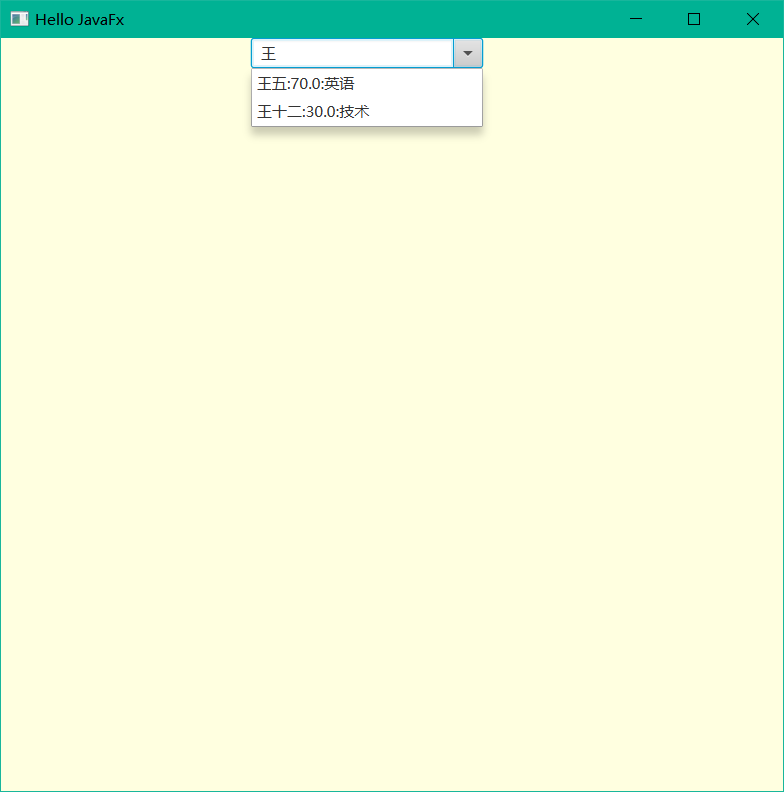ComboBox实现模糊搜索
实体类
class Student { private String name; private double score; private String subject; public Student(String name, double score, String subject) { this.name = name; this.score = score; this.subject = subject; } public Student() { } public String getName() { return name; } public void setName(String name) { this.name = name; } public double getScore() { return score; } public void setScore(double score) { this.score = score; } public String getSubject() { return subject; } public void setSubject(String subject) { this.subject = subject; } @Override public boolean equals(Object o) { if (this == o) return true; if (o == null || getClass() != o.getClass()) return false; Student student = (Student) o; return Double.compare(student.score, score) == 0 && Objects.equals(name, student.name) && Objects.equals(subject, student.subject); } @Override public int hashCode() { return Objects.hash(name, score, subject); } }初始化下拉列表和填充数据
Student student1 = new Student("张三", 78, "语文"); Student student2 = new Student("李四", 69, "数学"); Student student3 = new Student("王五", 70, "英语"); Student student4 = new Student("赵六", 49, "物理"); Student student5 = new Student("钱七", 80, "化学"); Student student6 = new Student("孙八", 99, "生物"); Student student7 = new Student("周九", 59, "政治"); Student student8 = new Student("吴十", 10, "历史"); Student student9 = new Student("郑十一", 20, "地理"); Student student10 = new Student("王十二", 30, "技术"); ComboBox<Student> comboBox = new ComboBox<>(); comboBox.getItems().addAll(student1, student2, student3, student4, student5, student6, student7, student8, student9, student10);其他设置
// 设置可编辑(相较于ChoiceBox的特点) comboBox.setEditable(true); // 设置占位符 comboBox.setPlaceholder(new Label("无学生"));保存原数据
ObservableList<Student> originalItems = comboBox.getItems();数据展示处理
comboBox.setConverter(new StringConverter<Student>() { @Override public String toString(Student object) { if (object == null) { return ""; } String value = object.getName() + ":" + object.getScore() + ":" + object.getSubject(); return value; } // 在输入框中输入文本按下回车键时,调用此方法 @Override public Student fromString(String string) { return null; } });获取单行文本框的文本监听
comboBox.editorProperty().get().textProperty().addListener((observable, oldValue, newValue) -> { if (newValue == null || newValue.isEmpty()|| originalItems.contains(comboBox.getValue())) { comboBox.setItems(originalItems); comboBox.setPlaceholder(new Label("无学生")); return; } // 取出符合条件的学生装进列表 FilteredList<Student> newList = originalItems.filtered(student -> student.getName().contains(newValue)); if (newList.isEmpty()) { comboBox.setItems(null); comboBox.setPlaceholder(new Label("无学生")); } else { comboBox.setItems(newList); comboBox.hide(); comboBox.show(); } });添加控件到布局中,调整位置,添加布局到场景,添加场景到舞台,调整舞台设置(省略)
